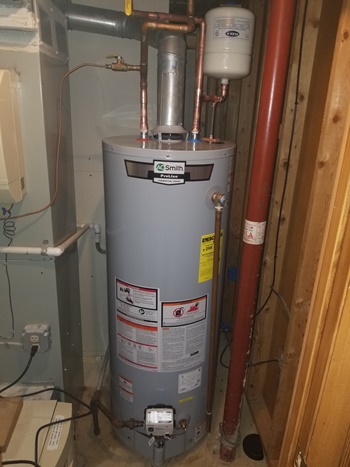Tips on How to Maintain Your Home's Hot Water System Functioning WellHow to Maintain Your Home's Hot Water System Functioning Well
Tips on How to Maintain Your Home's Hot Water System Functioning WellHow to Maintain Your Home's Hot Water System Functioning Well
Blog Article
We have encountered the article pertaining to Tips For Maintaining Your Hot Water Heater below on the internet and decided it made perfect sense to discuss it with you on this page.

Warm water is vital for everyday comfort, whether it's for a refreshing shower or cleaning recipes. To guarantee your warm water system runs successfully and lasts longer, regular upkeep is crucial. This short article gives sensible pointers and insights on how to keep your home's warm water system to prevent interruptions and costly fixings.
Intro
Preserving your home's hot water system might seem daunting, however with a few easy steps, you can ensure it runs smoothly for years ahead. This overview covers whatever from understanding your warm water system to DIY upkeep pointers and understanding when to contact professional aid.
Value of Keeping Your Warm Water System
Regular upkeep not just expands the lifespan of your warm water system however also guarantees it runs efficiently. Disregarding maintenance can bring about reduced efficiency, greater power bills, and also early failing of the system.
Signs Your Warm Water System Requirements Maintenance
Recognizing when your hot water system requires interest can prevent significant issues. Keep an eye out for indications such as inconsistent water temperature, odd noises from the heating system, or rustic water.
Understanding Your Hot Water System
Prior to diving into upkeep tasks, it's handy to comprehend the basic elements of your hot water system. Normally, this includes the hot water heater itself, pipes, anode rods, and temperature level controls.
Monthly Upkeep Tasks
Regular monthly checks can assist catch small concerns before they rise.
Flushing the Hot Water Heater
Flushing your water heater gets rid of sediment build-up, improving effectiveness and extending its life.
Monitoring and Changing Anode Rods
Anode rods stop deterioration inside the storage tank. Evaluating and replacing them when worn is critical.
Examining and Readjusting Temperature Settings
Changing the temperature level settings makes sure optimum performance and safety.
DIY Tips for Maintenance
You can do numerous maintenance tasks on your own to maintain your hot water system in top problem.
Looking for Leaks
Frequently check pipelines and links for leaks, as these can result in water damages and greater expenses.
Examining Stress Alleviation Valves
Testing the pressure relief valve ensures it works appropriately and prevents too much pressure buildup.
Protecting Pipelines
Insulating hot water pipes minimizes warmth loss and can save power.
When to Call an Expert
While do it yourself upkeep is beneficial, some issues require expert know-how.
Facility Concerns Requiring Professional Help
Examples consist of significant leaks, electrical issues, or if your water heater is regularly underperforming.
Routine Expert Maintenance Advantages
Expert maintenance can include thorough inspections, tune-ups, and guaranteeing compliance with safety standards.
Conclusion
Regular maintenance of your home's warm water system is necessary for effectiveness, longevity, and cost savings. By following these ideas and understanding when to seek professional help, you can ensure a reliable supply of hot water without unanticipated disturbances.
How to Maintain an Instant Hot Water Heater
Before tinkering with your hot water heater, make sure that it’s not powered on. You also have to turn off the main circuit breaker and shut off the main gas line to prevent accidents. Also turn off the water valves connected to your unit to prevent water from flowing into and out of the appliance. 2. When you’re done, you have to detach the purge valves’ caps. These look like the letter “T” and are situated on either side of the water valves. Doing so will release any pressure that has accumulated inside the valves while at the same time avoid hot water from shooting out and burning your skin. 3. When the purge valves’ caps are removed, you have to connect your hosing lines to the valves. Your unit should have come with three hoses but if it didn’t, you can purchase these things from any hardware or home repair shops. You can also get them from retail stores that sell water heating systems. Read the user’s manual and follow it to complete this task properly. When the hosing lines are connected, open the purge port’s valves. 4. You should never use harsh chemical cleaners or solutions when cleaning your unit. Make use of white vinegar instead. It should be undiluted and you’ll probably use about 2 gallons. 5. Now flush your water heater. This task should probably take about 40 minutes. We can’t give you specific directions for this because the procedure is carried out depending on the type, model and brand of your heater. With that being said, refer to the user’s manual. 6. When you’re done draining the unit, you have to turn off the purge port valves again. Remove the hosing lines that you earlier installed on each of the water valves. Put the valve caps (purge port) back in their respective places and be very careful so as not to damage the rubber discs that are found inside these caps. 7. Now that everything’s back in place, check your user’s manual again to find out how to reactivate your water heating system. 8. Once it is working, turn one of your hot water faucets on just to let air pass through the heater’s water supply pipes. Leave the tap on until water flows smoothly out of it. https://www.orrplumbing.com/blog/2014/september/how-to-maintain-an-instant-hot-water-heater/

We hope you enjoyed reading our article on Tips on Maintaining a Water Heater. Thanks so much for taking a few minutes to read our article. For those who appreciated our blog post plz do not forget to pass it around. Thank-you for your time spent reading it.
Book Instantly Report this page